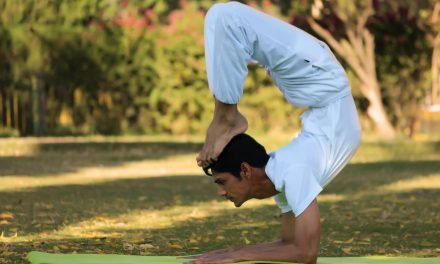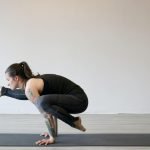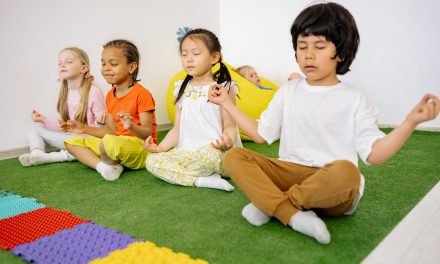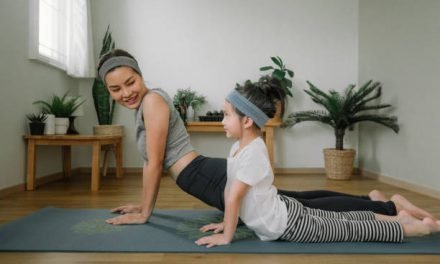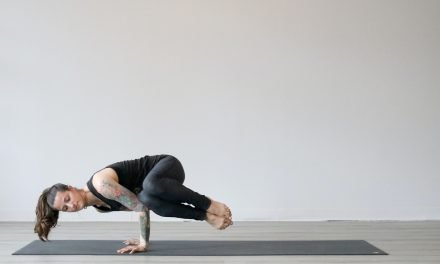
Yoga For Children – When Are Children Allowed To Use The Mat?
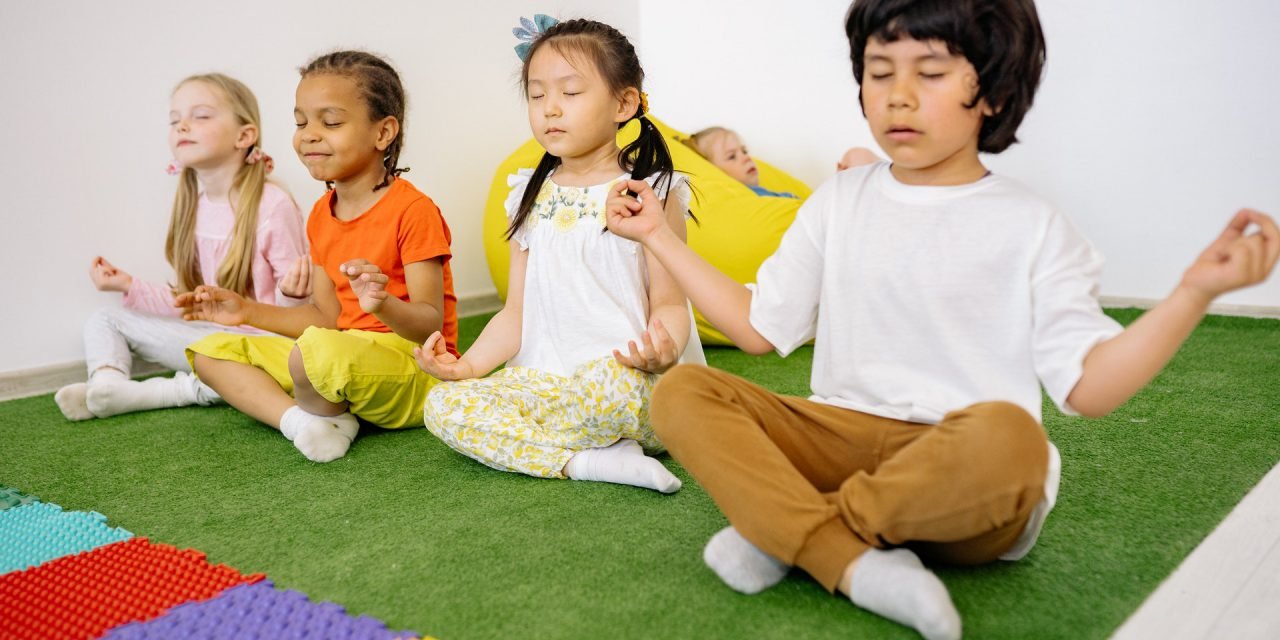
We have already spoken a few times in this blog about how many advantages yoga offers adults – and most of our readers have probably already had this experience themselves.
But what about our little ones? Is yoga also suitable for children and from what age can children attend the first yoga course? What should parents and siblings watch out for when their offspring want to exercise on the yoga mat at home?
We clarify. 🙂
What Are the Benefits of Yoga for Children?
Yoga brings body, mind, and soul into balance – this applies to adults as well as children. With yoga, children not only get to know their own body better but at the same time and almost automatically learn to stay calm and balanced even in hectic situations.
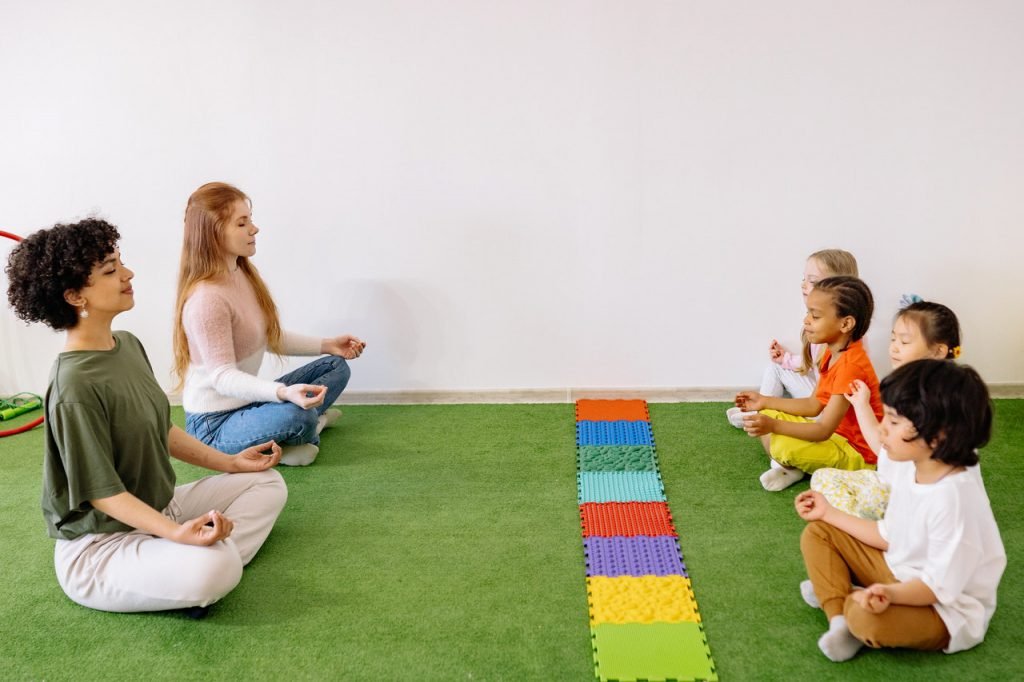
Yoga can, for example, protect even the youngest from performance pressure and pronounced test anxiety or alleviate the symptoms of stress.
At the same time, yoga promotes body awareness, the ability to concentrate, and mindfulness, which are automatically trained when learning new movement sequences – skills that bring great benefits into late adulthood.
At What Age Can Children Start Yoga?
In general, children can start practicing yoga as soon as they can walk – after all, yoga is for everyone!
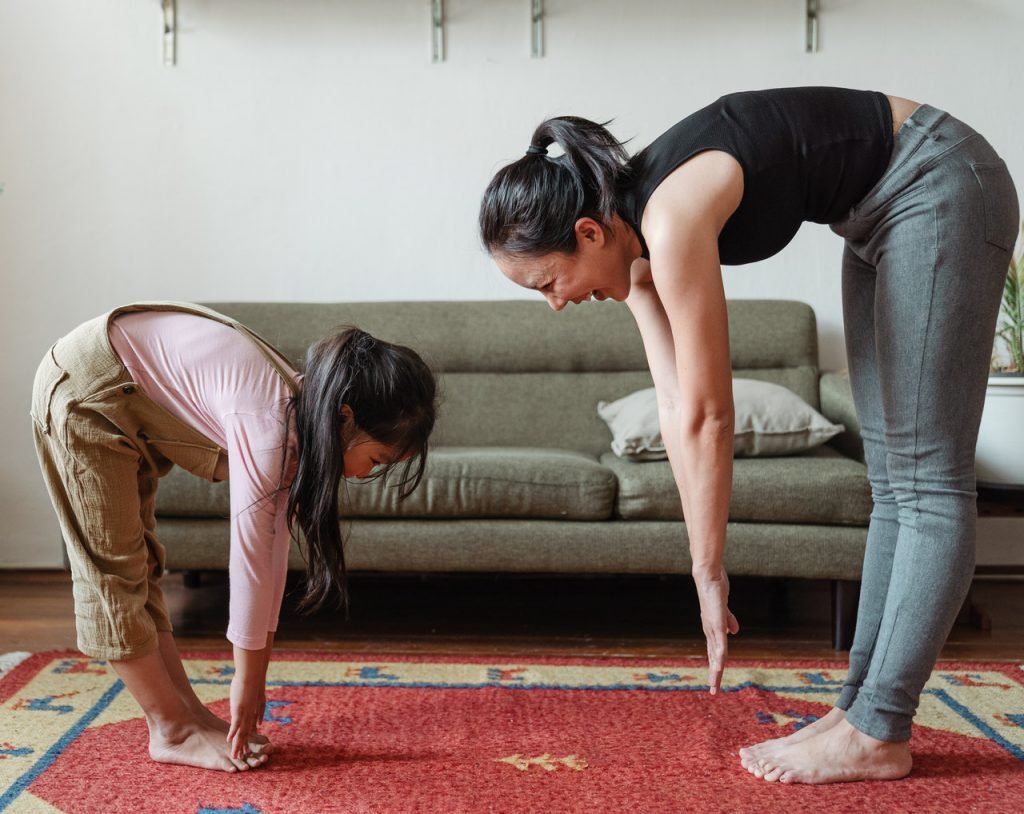
However, one should be careful not to push or overwhelm the little ones, but to introduce them to the practice with fun and ease. Instead of a full power yoga class, it is advisable, for example, to practice two to three asanas with the entire family and make the whole thing playful and family time.
The first children’s yoga courses are offered from kindergarten age – but here, too, the focus should be on the character of games, so that yoga is not just a duty, but a hobby.
What Do You Have to Look Out for in Children’s Yoga Compared to “Adult Yoga”?
Even with children’s yoga, the classic utensils such as gymnastics or fitness mats and a blanket to cover (final relaxation) should not be missing. Sufficient space is very important: whether in the living room or in the playroom if the balance is lost and the child falls over, it should not be able to injure itself on tables, chairs, or cupboards standing around.
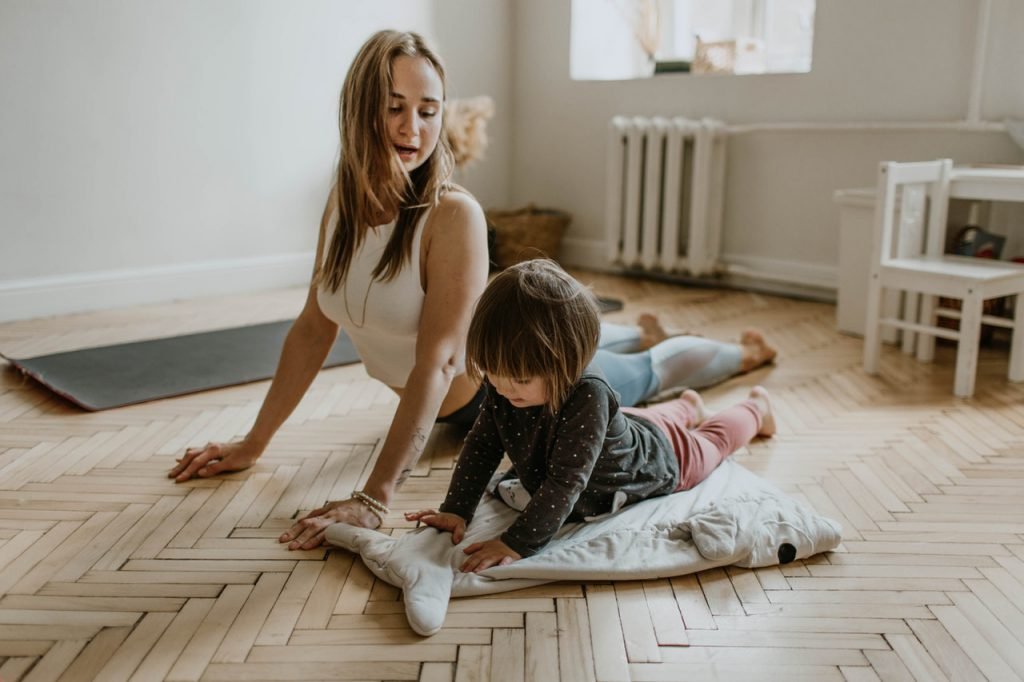
Not only furniture and toys but also negative emotions should be cleared aside before a yoga unit so that the yoga unit can be completed with a good feeling, fun, and joy. A little imaginary journey to start can help to get in the right mood for the yoga session.
The general rule is fun, fun, fun! Laughing is not forbidden in yoga, on the contrary: the asanas can be combined with funny stories, if someone falls over, you can laugh heartily at yourself.
As with adults, nothing should be eaten about one to two hours before a yoga session. Some yoga exercises could possibly “disturb the gastrointestinal tract” of the little ones – if you want, you can introduce a little yoga ritual with delicious snacks and tea afterward.
Which Asanas Are Good for Children?
Static yoga exercises, asanas for short, require a relatively large amount of time and patience. Since children like to try out many yoga exercises, the individual asanas should not be held too long at the beginning.
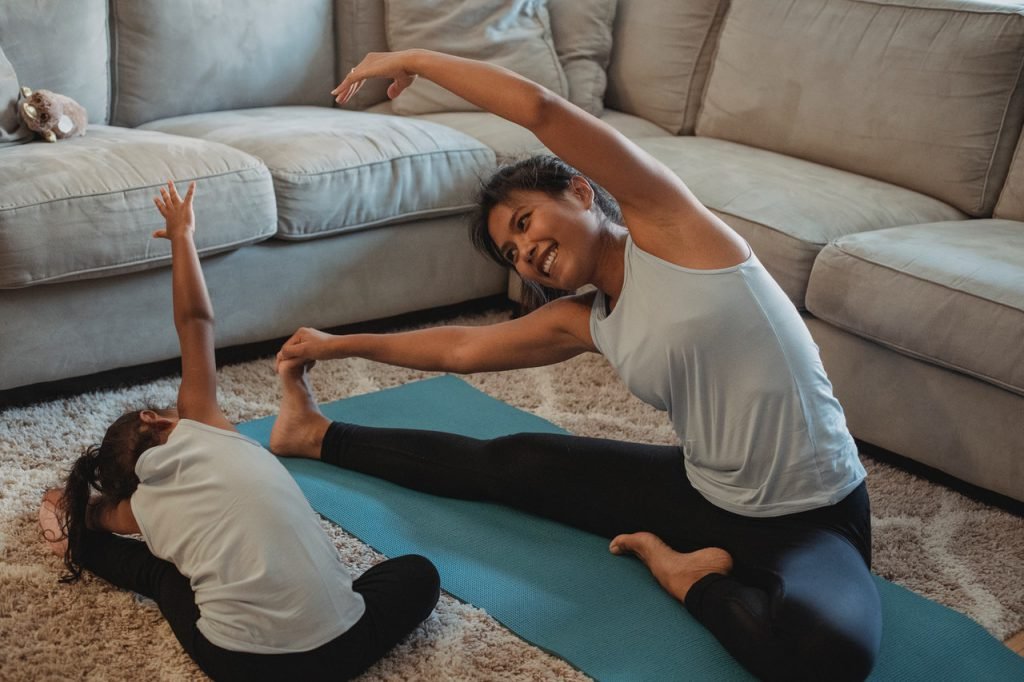
Additional recommendations for asanas with children:
- The assistance should also be seen as help by the child
- Asanas should be well demonstrated by the yoga teacher
- Asanas should take into account the children’s environment
- Praise, praise, praise!
Basically, children can do most asanas, but we recommend starting with rather simple asanas and not putting too much strain on the cervical spine and joints. In our yoga sequence for children, we, therefore, forego the headstand or the crow.
Shoulder Stand (Sarvangasana)
The shoulder stand is suitable for the mobility of the cervical spine and the function of the thyroid gland. In doing so, calmness and concentration can be trained.
Cobra (Bhujangasana)
The cobra is popular with children and adults. It strengthens the back muscles, relieves tension, and generates an upright posture.
Bow (Dhanurasana)
An exercise that many children know from physical education classes. It strengthens the back muscles and massages the abdominal organs. Some children develop the bow to the “swing bow” by swinging back and forth in fun.
- Plow (halasana)
- Fish (Matsyasana)
- Grasshopper (Shalabhasana)
- Triangle (Trikonasana)
- Rotating Seat (Ardha Matsyendrasana)
Conclusion: At a time when children have or find less flexibility, muscle strength, mindfulness, and relaxation, yoga can be used universally. Children benefit from the numerous possibilities that yoga offers for body and mind – and often also from the time spent together with the family.


